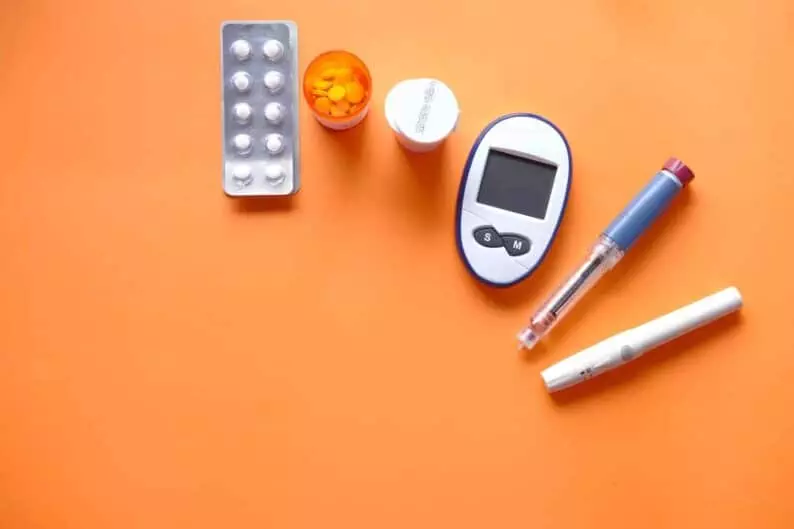Table of Contents
One of the most prevalent medical conditions of our time, diabetes affects 34.2 million people in the USA alone. That’s roughly around 1 in 10 Americans. What’s even more concerning is the fact that more than 280.000 of those patients are younger than 20.
While this medical condition is a serious one, it’s possible for those diagnosed with it to continue leading normal lives. In this article, we’ll define diabetes, its types, causes, and symptoms, while simultaneously offering different methods for coping and treatment of this condition, especially when it comes to the youngest of patients.
What is diabetes?
Our bodies are complex mechanisms. In order for them to function properly, they depend on glucose for energy. Glucose comes from the food we eat, acting as the body’s fuel. To produce that fuel, the body heavily relies on a hormone called insulin. When there’s not enough insulin, the body cannot regulate blood glucose properly. This is when type 1 diabetes occurs.
There are also cases where the body is making insulin, but it is unable to use it in the right way. As a result, there are higher blood sugar levels present in the bloodstream. In other words, the glucose doesn’t get to the cells as it should.
When this happens repeatedly over a long period of time, it can cause serious damage to the blood vessels. This can lead to serious health problems such as heart disease, and may even cause stroke.
Forms of diabetes
Different types of diabetes require a different approach to treatment. Type 1 diabetes is a condition where the cells in the pancreas cannot produce insulin. This is because the immune system destroys the insulin-producing cells. It usually appears in children and adolescents, but it can happen at any age.
Type 2 diabetes signifies a condition where the body is unable to use insulin in the right way. According to a reputable endocrinologist diabetes specialist in Florida, this type of diabetes is more common in adults and older people. However, an increasing number of patients getting diagnosed with it are actually children.
There is also a third type of diabetes, the one that women develop during pregnancy. It is called gestational diabetes and can disappear after giving birth. Still, women who develop it are at a higher risk of developing type 2 diabetes.
Causes of diabetes

Once diagnosed, diabetes becomes a lifelong condition. Of course, there are multiple reasons why a person may develop diabetes.
Some people have a genetic predisposition towards this particular medical condition (Hispanics, Asian Americans, African Americans, and Pacific Islanders). Others develop it due to different lifestyle factors such as an unhealthy diet, an inactive lifestyle, and being overweight.
Sometimes, the hormonal changes that take place during pregnancy will contribute to the development of gestational diabetes. Other times, a person will develop diabetes due to genetic mutations, hormonal diseases, pancreatitis, and even certain medications.
Symptoms of diabetes
Although symptoms vary depending on the type of diabetes, common ones include:
- tiredness and weakness
- excessive thirst
- frequent urination
- blurry vision
- sudden weight loss
- frequent infections
- irritability and mood swings
People diagnosed with type 1 diabetes tend to experience more severe symptoms. On the other hand, people with type 2 diabetes or prediabetes may not have symptoms at all. If you notice any of these symptoms in your child, schedule a doctor’s appointment as soon as possible. They can be easy to miss sometimes, so keep your eyes peeled for anything out of the ordinary.
Diabetes management and treatment
Being diagnosed with diabetes brings many changes, but this is a condition that can be managed and treated. In case of pediatric diabetes, parents are the ones responsible for making these changes. This is especially true if the patient in question is too young to understand their condition.
Start by creating a diet plan your child can stick to and encourage them to get moving. Prepare your meals together and go grocery shopping as a family. Do your best to lead an active lifestyle and focus on the activities using the Diabetic sock everyone enjoys.
Explain to your child the importance of insulin injections and blood glucose level monitoring. Do your best to inform and educate yourself and your child about their condition and talk to their teachers too. Keep track of their emotions and behavior and address any changes. If they feel isolated or as if they’re beings set apart from their peers, consider getting them in a diabetes camp. With regular doctor’s appointments and constant encouragement to actively participate in diabetes management, parents can help set their children up for successful diabetes care.
Wrapping up
Diabetes is a long-term condition, one that brings multiple long-term complications and risks. It can occur at any age; unfortunately, young children are not an exception. Still, those affected by this condition can take the necessary steps to treat diabetes and prevent further damage. Consequently, they can manage to maintain their health and continue leading a normal life.


